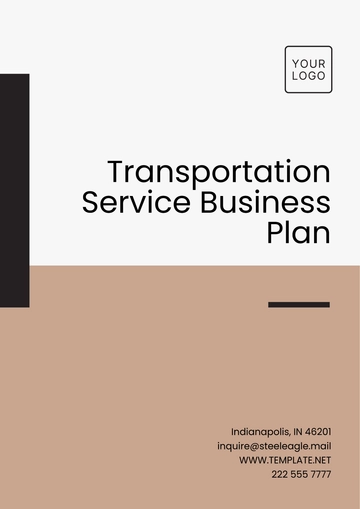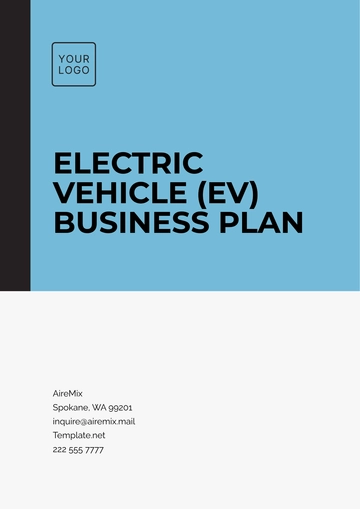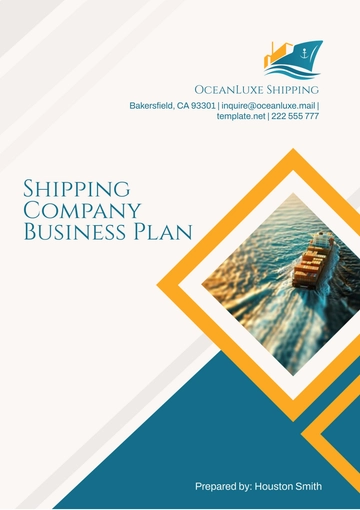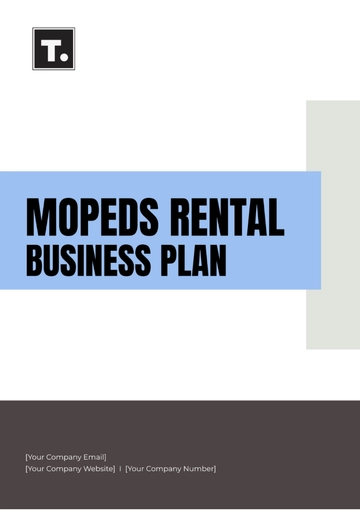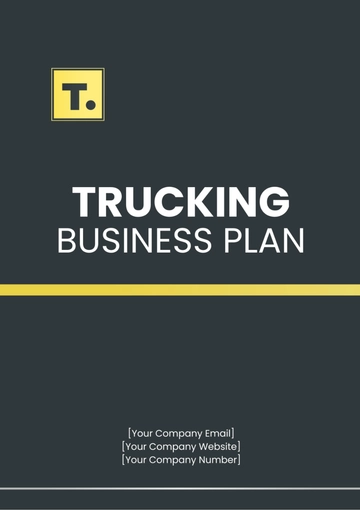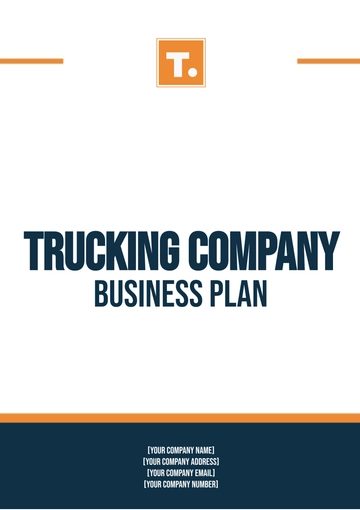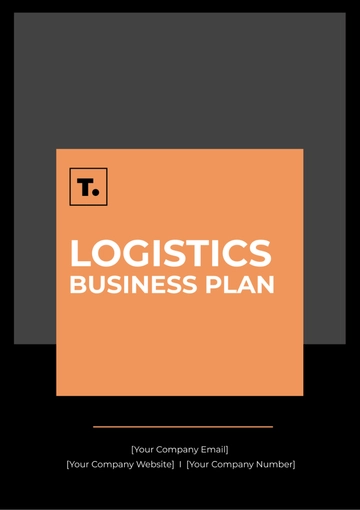Free Shipping Company Business Plan
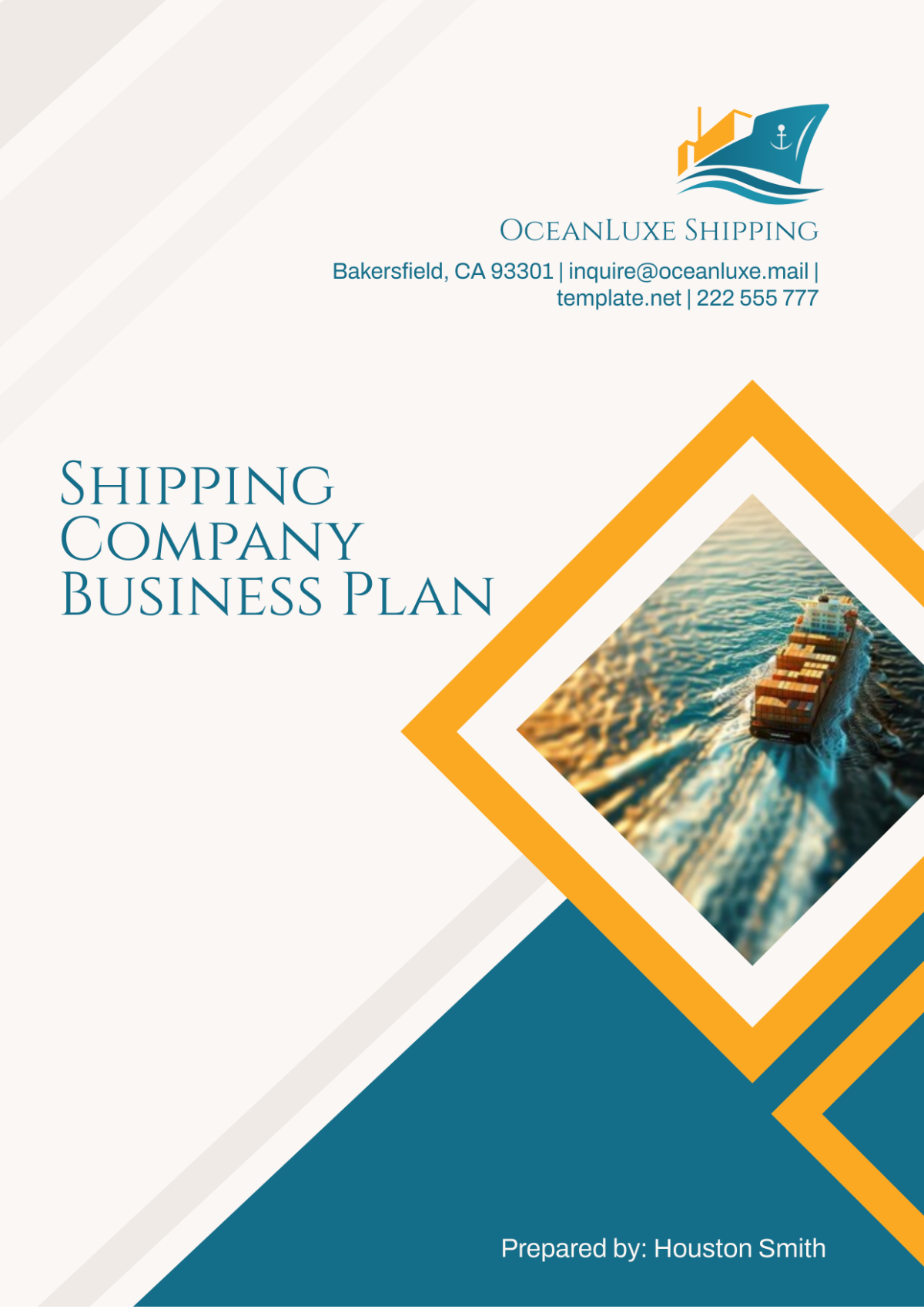
1. Executive Summary
1.1 Company Overview
[Your Company Name] is a logistics and shipping company established to provide innovative, reliable, and cost-efficient shipping solutions to clients worldwide. We focus on offering a range of services tailored to meet the needs of various industries, including e-commerce, retail, manufacturing, and more. As an integral part of global supply chains, our role is to ensure smooth movement of goods, regardless of size or destination. By combining expertise in freight forwarding, warehousing, customs brokerage, and last-mile delivery, we aim to provide seamless service while maintaining high standards for safety, security, and timely delivery. In the next [10] years, we plan to expand our global footprint, develop new technological solutions for logistics, and deliver even greater value to our customers.
1.2 Mission Statement
The mission of [Your Company Name] is to simplify the shipping process for businesses and individuals by providing reliable, fast, and cost-effective logistics services. Our commitment to customer satisfaction is evident in every shipment we handle, from the first mile to the final destination. We leverage cutting-edge technology to streamline operations, reduce costs, and enhance delivery speeds. By offering tailored solutions, we ensure that every customer’s unique logistics needs are met efficiently and at competitive rates. Through continuous innovation and sustainable practices, we aspire to lead the logistics industry into a new era of transparency and efficiency.
1.3 Vision Statement
By [2050], [Your Company Name] aims to become the leading logistics and shipping company, recognized globally for its innovative solutions, operational efficiency, and environmental stewardship. Our vision is to empower businesses of all sizes to access reliable, affordable shipping services, no matter where they operate. We envision a future where [Your Company Name] leads the industry in sustainability, integrating green technologies to minimize our environmental impact while providing top-tier service. By investing in technology and talent, we will create a seamless, transparent, and responsive supply chain that anticipates the needs of our customers and adapts to the ever-changing global market.
1.4 Business Objectives
Our business objectives are designed to help us achieve rapid growth and long-term sustainability:
Achieve Annual Revenue of $[100 Million] by [2051]: We plan to grow revenue by [15]% annually, expanding our market presence and client base across different industries.
Increase Market Share by [15]% per Year: By providing exceptional value, customer-focused solutions, and competitive pricing, we will target SMEs, large corporations, and e-commerce businesses.
Achieve a Customer Satisfaction Rate Above [95]%: We are committed to enhancing customer experience by continually improving our services, providing personalized support, and ensuring timely deliveries.
Reduce Carbon Footprint by [20]% by [2055]: As part of our commitment to environmental sustainability, we will invest in green technologies, including electric delivery vehicles, fuel-efficient vessels, and AI-powered logistics solutions.
Expand Operations into [5] New International Markets by [2055]: We plan to expand our operations into key international markets, increasing our global footprint and gaining new clients.
2. Company Description
2.1 Business Structure and Ownership
[Your Company Name] operates as a privately held Limited Liability Company (LLC). This structure provides flexibility, limited liability protection, and favorable tax advantages. As an LLC, the company’s founders, management, and key investors maintain full control over operations and decision-making. Our ownership model ensures that the company can adapt quickly to changing market conditions while maintaining a strong sense of accountability and responsibility. The current ownership is split between the founding members, with potential for investment or equity partnerships as the business scales. Over the next [5] years, we will look into opportunities to bring in additional investors to support our planned expansion.
2.2 Location and Facilities
Our headquarters are located in [Your City], strategically positioned near major ports and transportation hubs. This prime location enables efficient access to air, sea, and land transportation networks, providing us with a competitive edge in managing both domestic and international shipments. The company’s main facility covers an area of [50,000] square feet, equipped with state-of-the-art warehouses, docking areas, and sorting systems. We have advanced logistics software to track goods in real time and ensure timely deliveries. Furthermore, our future expansion plans include setting up additional facilities in key regions across North America, Europe, and Asia, enabling us to cater to new markets and increase operational efficiency.
2.3 Service Offerings
[Your Company Name] offers a comprehensive suite of logistics services, ensuring that we meet the unique needs of various industries:
Freight Forwarding: Our primary service involves managing the movement of goods via multiple modes of transport, such as air, sea, and land. We handle all logistics operations, from pickup to delivery, ensuring timely and secure transit.
Warehousing Solutions: We provide secure storage options for goods, ranging from short-term to long-term solutions. Our warehouses are equipped with modern inventory management systems that track goods and enable seamless order fulfillment.
Customs Brokerage: Our licensed customs brokers ensure that all international shipments comply with local customs regulations. We manage all paperwork, taxes, and duties to ensure smooth clearance at borders.
Last-Mile Delivery: As e-commerce continues to grow, we recognize the importance of efficient last-mile delivery. Our team is trained to ensure packages reach their final destination quickly and safely.
Through these services, we provide end-to-end logistics solutions, ensuring that we meet all of our customers' shipping and supply chain needs.
3. Market Analysis
3.1 Industry Overview
The global logistics industry is experiencing significant growth, driven by factors such as the rise of e-commerce, increasing international trade, and advancements in technology. With a projected annual growth rate of [4.5]% through [2060], the sector is expected to reach a value of $[15 trillion] by [2055]. Technological innovations, including AI-driven logistics software, autonomous trucks, and blockchain for secure and transparent transactions, are revolutionizing the industry. Additionally, the rise of demand for sustainable and eco-friendly shipping practices is reshaping the way companies approach logistics. [Your Company Name] aims to capitalize on these trends, positioning itself as a leader in technology adoption and sustainable practices in the logistics space.
3.2 Target Market
Our target market is diverse, encompassing a wide range of businesses and individuals who require reliable shipping solutions. These include:
Small and Medium Enterprises (SMEs): These businesses often face challenges in managing complex logistics. [Your Company Name] offers tailored solutions that streamline operations and reduce overhead costs.
Large Corporations: Multinational companies require sophisticated shipping solutions to move goods across borders efficiently. Our experience in handling international shipments positions us well to serve these clients.
E-commerce Companies: As e-commerce continues to grow, our focus is on providing fast, reliable, and affordable delivery solutions that meet the expectations of online shoppers.
Individual Consumers: With the rise of international shipping for personal items, we also offer shipping services for individuals who require assistance in sending goods overseas.
By offering flexible services and competitive rates, we aim to attract a diverse range of clients who require global shipping solutions.
3.3 Market Needs
The shipping and logistics industry has several evolving needs:
Speed and Reliability: In the age of instant gratification, consumers and businesses expect fast, reliable deliveries. Our focus on optimized delivery routes and cutting-edge logistics technologies will ensure that we meet these demands.
Transparency and Tracking: With increasing demands for visibility, customers expect real-time updates on their shipments. Our advanced tracking systems allow clients to monitor shipments throughout their journey, improving customer satisfaction.
Cost-Effectiveness: Rising fuel costs and supply chain disruptions require companies to find more cost-efficient ways of shipping goods. Our pricing structure offers competitive rates while ensuring the highest standards of service.
3.4 Competitive Analysis
The logistics industry is highly competitive, with several key players holding significant market share. However, [Your Company Name] is uniquely positioned to compete based on our ability to offer flexible, customer-centric solutions that cater to both businesses and individual consumers. A detailed analysis of our competitors reveals several areas of opportunity:
Technology: While many large logistics companies use traditional methods for managing shipments, we differentiate ourselves by incorporating cutting-edge technologies like AI, machine learning, and blockchain for real-time tracking, predictive delivery, and efficient route optimization.
Customer Service: Unlike many competitors, we offer highly personalized services, including dedicated account managers for key clients and a robust customer support system that ensures 24/7 assistance.
By continuing to focus on innovation, customer service, and sustainability, we will establish ourselves as a competitive force in the logistics and shipping industry.
4. Marketing Strategy
4.1 Branding and Positioning
[Your Company Name] aims to establish itself as a forward-thinking, reliable, and eco-friendly shipping company. Our branding strategy will focus on highlighting our commitment to customer satisfaction, operational excellence, and sustainability. We will position ourselves as a one-stop solution for all logistics needs, emphasizing our innovative technology and tailored services for businesses of all sizes. Our marketing messages will underscore our ability to provide fast, affordable, and reliable shipping solutions.
4.2 Pricing Strategy
Our pricing strategy will be competitive within the industry while ensuring that we maintain profitability. We will offer tiered pricing based on factors such as shipment size, delivery speed, and destination. By utilizing advanced technology to optimize routes and reduce operational costs, we will pass on savings to our clients without compromising service quality. Additionally, we will offer custom pricing packages for large corporations and frequent shippers.
4.3 Distribution and Promotion
Our promotional efforts will focus on raising awareness of our services through digital marketing, including social media campaigns, search engine optimization (SEO), and targeted email marketing. We will also leverage partnerships with key industry players, participate in trade shows, and offer discounts for first-time customers to build brand recognition. Our distribution strategy will ensure that our services are available to customers worldwide, with a focus on high-demand areas such as North America, Europe, and Asia.
5. Operations Plan
5.1 Supply Chain Management
Efficient management of the supply chain is vital for the success of [Your Company Name], as it directly impacts the speed, cost, and quality of our services. We plan to build strong, long-term relationships with reliable suppliers, shipping agents, and third-party logistics providers. These partnerships will allow us to streamline operations, secure better rates, and ensure the timely delivery of goods. By leveraging advanced technology, we will be able to monitor and optimize our supply chain, ensuring that delays are minimized and costs are controlled.
Our logistics software will allow us to track goods in real-time, from the moment they are picked up to their arrival at the destination. This visibility will provide our customers with up-to-date information on their shipments, increasing customer satisfaction and reducing inquiries. Additionally, our system will use predictive analytics to forecast demand fluctuations, allowing us to make informed decisions about inventory management and shipping schedules.
We will also focus on building relationships with key partners to ensure a consistent flow of goods and services, even during periods of high demand or supply chain disruptions. This proactive approach will help us stay competitive and adapt to any changes in the global market, such as shifting trade patterns or the emergence of new suppliers.
5.2 Key Equipment and Technology
To support our operations and improve efficiency, [Your Company Name] will invest heavily in state-of-the-art equipment and technology. Our key assets include:
Fleet: Our fleet will consist of [100] trucks, [10] ships, and [5] airplanes. These vehicles will be equipped with fuel-efficient engines and modern tracking systems, allowing us to minimize operational costs and improve delivery speeds. By using advanced fuel-efficient vehicles and vehicles with lower emissions, we aim to reduce our carbon footprint and contribute to a more sustainable shipping industry.
Technology: Our AI-driven logistics software will play a key role in optimizing our supply chain. This software will not only track shipments in real time but will also analyze route efficiency, traffic conditions, and weather patterns to recommend the fastest and most cost-effective delivery options. Additionally, the software will use machine learning to predict potential delays and help us plan contingencies ahead of time, improving reliability.
Warehouses and Sorting Centers: Our facilities will be equipped with automated sorting systems, improving the efficiency of our warehouse operations. These systems will reduce human error, speed up processing times, and allow for more accurate inventory management. Our facilities will also include temperature-controlled areas for sensitive goods, ensuring that we can cater to a variety of industries, including pharmaceuticals, food, and electronics.
5.3 Personnel and Training
At the heart of [Your Company Name]'s operations will be our dedicated team. We plan to recruit a mix of experienced professionals and skilled workers who share our commitment to excellence and customer satisfaction. Key personnel will include:
Logistics Coordinators: These individuals will be responsible for managing the flow of goods, tracking shipments, and ensuring that all operations run smoothly. They will work closely with our supply chain partners to ensure timely deliveries and resolve any operational issues that may arise.
Warehouse Managers: Our warehouse managers will oversee inventory management, order fulfillment, and the day-to-day operations of our facilities. They will work to optimize storage space and ensure that goods are handled safely and efficiently.
Drivers and Operators: Our fleet of drivers will be highly trained to handle various types of shipments, from oversized cargo to sensitive goods. They will be trained in best practices for safe driving, logistics coordination, and customer service.
Customer Service Representatives: Our customer service team will provide support to customers, handling inquiries, complaints, and special requests. They will be trained to manage customer expectations, ensure clear communication, and provide proactive solutions.
Training will focus on ensuring that all employees are proficient in using the latest technology and logistics systems. We will also provide ongoing training to keep our staff updated on industry trends, customer service best practices, and new technological advancements in the logistics field. By investing in our workforce, we ensure that [Your Company Name] remains a leader in operational efficiency and customer satisfaction.
6. Management and Organization
6.1 Organizational Structure
[Your Company Name] will have a flat organizational structure that fosters collaboration and quick decision-making. This structure will be essential as we continue to grow and adapt to the rapidly changing logistics industry. The core leadership team will consist of the following key roles:
Chief Executive Officer (CEO): The CEO will oversee all aspects of the company’s operations, setting the strategic direction, and ensuring that the business is aligned with our long-term goals. The CEO will also be responsible for managing investor relations and building relationships with key partners.
Chief Operations Officer (COO): The COO will manage day-to-day operations, ensuring that the logistics, supply chain, and customer service teams are working efficiently. They will be in charge of managing operational budgets and improving the company’s processes to maximize profitability.
Head of Sales and Marketing: This person will be responsible for driving business growth through marketing campaigns, sales strategies, and customer acquisition. They will focus on building brand awareness, targeting key markets, and expanding our global reach.
Logistics and Warehouse Manager: This person will oversee the logistics operations, including managing the fleet, warehouses, and inventory. They will work closely with suppliers, partners, and customers to ensure that deliveries are made on time and within budget.
Customer Support Manager: The customer support manager will ensure that our customers receive excellent service throughout their experience with [Your Company Name]. This person will be responsible for handling complaints, managing customer expectations, and ensuring that issues are resolved in a timely manner.
6.2 Management Team
The management team of [Your Company Name] will bring decades of combined experience in the logistics and shipping industries. Our leadership team will be composed of professionals who have a proven track record in operations management, customer service, technology implementation, and global trade. Together, they will steer the company through the complexities of a rapidly evolving global logistics environment, ensuring that we remain agile, innovative, and customer-focused.
Our team will undergo regular strategic planning sessions to ensure that all departments are aligned with the company’s vision and objectives. We will foster a culture of transparency and accountability, ensuring that our managers are equipped with the tools and resources necessary to succeed in their roles.
6.3 Advisory Board
Our advisory board will consist of individuals with significant expertise in logistics, technology, and international trade. These experts will provide strategic guidance and counsel, helping [Your Company Name] navigate challenges and seize new opportunities in the global marketplace. The advisory board will also provide insight into emerging trends, helping us stay ahead of the curve in terms of technology adoption, regulatory changes, and market dynamics. The diverse backgrounds of our advisory board members will offer a wide range of perspectives, ensuring that the company makes well-informed decisions.
7. Financial Plan
7.1 Start-up Costs
The start-up capital required to establish [Your Company Name] will be allocated across various key areas, including the purchase of equipment, the setup of facilities, and investments in technology and marketing. Below is a breakdown of the expected start-up costs:
Item | Cost |
|---|---|
Fleet Acquisition | $5 million |
Facility Setup | $2 million |
Technology Investment | $1 million |
Marketing and Branding | $500,000 |
Miscellaneous Expenses | $500,000 |
Total | $9 million |
These initial costs are necessary to ensure that we have the infrastructure, tools, and resources to begin operations and effectively serve our customers. The fleet acquisition will focus on fuel-efficient vehicles and equipment, while the facility setup will include investments in warehouses, sorting systems, and office spaces.
7.2 Revenue Projections
We anticipate strong revenue growth as we establish our presence in the logistics industry. The following table outlines our projected revenue for the first [5] years:
Year | Projected Revenue ($) |
|---|---|
2050 | 10 million |
2051 | 15 million |
2052 | 20 million |
2053 | 25 million |
2054 | 30 million |
Our revenue projections are based on anticipated growth in both domestic and international markets, with steady increases in demand for our services. As we continue to expand our customer base and refine our operations, we expect our revenue to grow significantly year-over-year.
7.3 Expense Forecast
We anticipate that our operating expenses will gradually increase as we expand our fleet, hire more employees, and invest in technology upgrades. The following table outlines our forecasted annual expenses for the next [5] years:
Category | Projected Annual Expense ($) |
|---|---|
Salaries | 2 million |
Fleet Maintenance | 500,000 |
Facility Rent | 200,000 |
Utilities | 50,000 |
Technology Maintenance | 100,000 |
Total | $2.85 million |
These expenses are essential for maintaining smooth operations, ensuring high service standards, and supporting our growth. As we scale, some expenses—such as fleet maintenance and staffing—will increase, while others—such as technology costs—will stabilize once the initial systems are fully implemented.
7.4 Break-even Analysis
We expect to reach the break-even point by the end of [2051]. Given our start-up costs, fixed expenses, and the anticipated revenue growth, we project that [Your Company Name] will need to handle approximately [2,000] shipments annually to break even. After this point, we expect to see a gradual increase in profitability as we optimize our operations and customer base.
8. Conclusion
[Your Company Name] is poised to become a key player in the logistics and shipping industry. With a focus on innovation, sustainability, and customer service, we are confident in our ability to differentiate ourselves from traditional competitors and capture market share in both established and emerging markets.
By leveraging cutting-edge technology, streamlining our operations, and providing unparalleled service, we will meet the evolving needs of customers around the world. As we continue to grow and expand, we remain committed to delivering reliable, cost-effective shipping solutions that benefit our clients, our employees, and the global economy. We believe that with the right team, strategy, and resources, [Your Company Name] can become a leader in the logistics industry by [2055].
- 100% Customizable, free editor
- Access 1 Million+ Templates, photo’s & graphics
- Download or share as a template
- Click and replace photos, graphics, text, backgrounds
- Resize, crop, AI write & more
- Access advanced editor
Plan your shipping business's future with the Shipping Company Business Plan Template from Template.net. This editable and customizable template helps you outline business goals, strategies, and financial projections. Personalize it using our Ai Editor Tool to fit your company's vision.
You may also like
- One Page Business Plan
- Coffee Shop Business Plan
- Restaurant Business Plan
- Food Business Plan
- Real Estate Business Plan
- Executive Summary Business Plan
- Cover Page Business Plan
- Nonprofit Business Plan
- Daycare Business Plan
- Construction Business Plan
- Startup Business Plan
- Medical Business Plan
- Bakery Business Plan
- Service Plan
- Hotel Business Plan
- Catering Business Plan
- School Business Plan
- Healthcare Business Plan
- Transportation Plan
- Sports Plan
- Car Wash Business Plan
- Salon Business Plan
- Clothing Business Plan
- Farming Business Plan
- Boutique Plan
